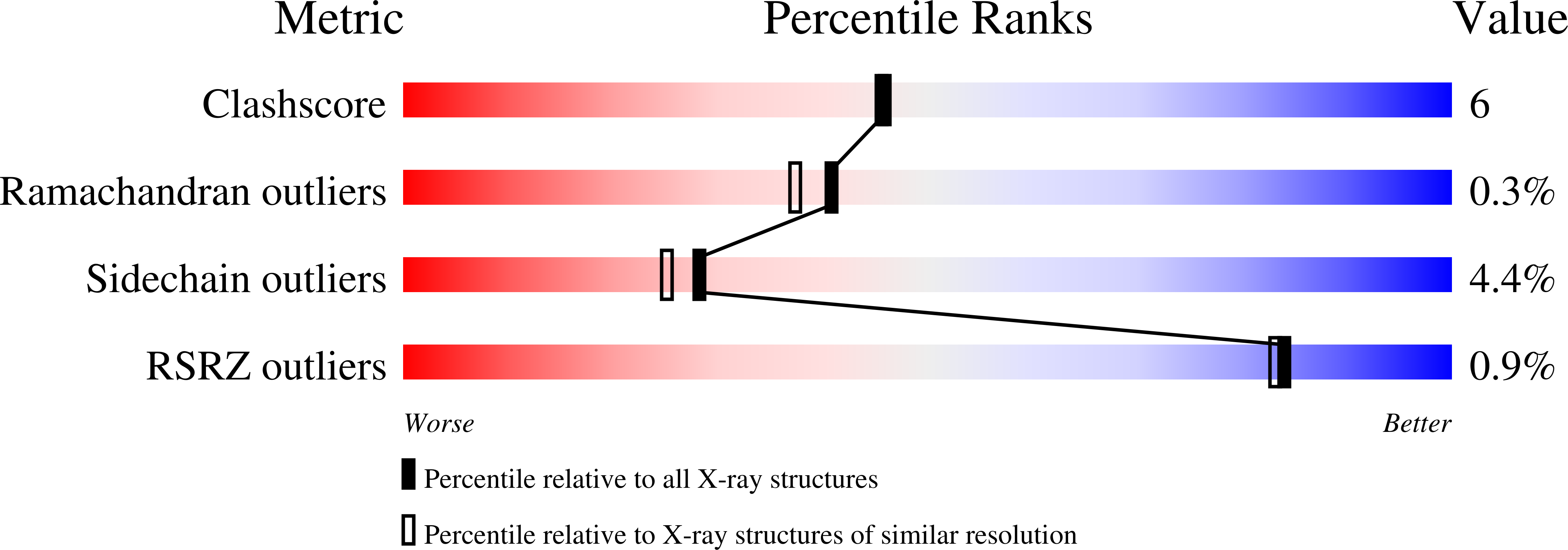The crystal structure of an intramolecular trans-sialidase with a NeuAc alpha2-->3Gal specificity.
Luo, Y., Li, S.C., Chou, M.Y., Li, Y.T., Luo, M.(1998) Structure 6: 521-530
- PubMed: 9562562
- DOI: https://doi.org/10.1016/s0969-2126(98)00053-7
- Primary Citation of Related Structures:
1SLI, 1SLL - PubMed Abstract:
Intramolecular trans-sialidase from leech (Macrobdella decora) is a unique enzyme which cleaves the terminal neuraminic acid (NeuAc) residue from sialoglycoconjugates, releasing 2, 7-anhydro-neuraminic acid (2,7-anhydro-NeuAc). It is the first enzyme found to exhibit strictly specific cleavage of NeuAc alpha2-->3Gal linkages in sialoglycoconjugates. The release of 2,7-anhydro-NeuAc instead of NeuAc implies a unique mechanism, in which the sialosyl linkage is transferred within the sialoglycoconjugate rather than hydrolyzed. The aims of the structural study were to gain structural insight into the strict specificity and unique mechanism of this unusual enzyme. . The 2.0 A crystal structure of recombinant leech intramolecular trans-sialidase has been solved by multiple isomorphous replacement. The 1.8 A structure of the enzyme in complex with 2-deoxy-2, 3-didehydro-NeuAc was also solved. The refined model comprising residues 81-769 has a catalytic beta-propeller domain (C), a N-terminal lectin-like domain (II) and an irregular beta-stranded domain (III) inserted into the catalytic domain. The structure reveals several possible carbohydrate-binding features: domain II has a concave face, like that of other sialidases, and there is a suitable surface charge distribution at the domain III-C interface. Structural comparisons showed closer evolutionary relationships to bacterial sialidases than to viral neuraminidases. Mainchain and sidechain atoms around Thr593 make the glycerol-binding pocket incapable of accommodating an extended equatorial 6-glycerol group, implying that the 6-glycerol group of the reaction intermediate may occupy an axial position, which is also required by the catalytic mechanism. The steric hindrance introduced by the bulky sidechain of Trp734 above the 2-carboxylate group may explain the lack of water involvement in the cleavage reaction and the substrate specificity.
Organizational Affiliation:
Center for Macromolecular Crystallography, University of Alabama at Birmingham, Alabama 35294, USA.















